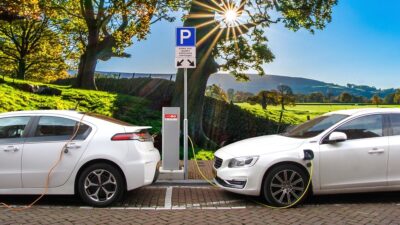Self-driving cars, often referred to as autonomous vehicles (AVs), are no longer a distant fantasy; they are rapidly becoming a reality on our roads. But how do these vehicles navigate, make decisions, and ensure safety without human intervention? Let’s take a closer look at the technology that powers these cutting-edge machines and understand how they “think.”
1. The Foundation: Sensors and Cameras
At the core of every self-driving car are an array of sensors and cameras that provide a comprehensive view of the vehicle’s surroundings. These often include:
-
LiDAR (Light Detection and Ranging): This technology uses laser pulses to create a detailed 3D map of the environment. It allows the vehicle to detect the distance to objects and identify their size and shape.
-
Radar: Radar systems complement LiDAR by offering longer-range detection capabilities, particularly useful in adverse weather conditions.
-
Cameras: High-definition cameras are strategically placed around the vehicle to monitor traffic lights, road signs, pedestrians, and other vehicles. They play a crucial role in interpreting visual data.
- Ultrasonic Sensors: These sensors are primarily used for close-range detection, such as parking operations and detecting nearby objects.
2. Data Processing: The Brain of the Operation
While sensors and cameras gather immense amounts of data, there must be a system in place to process this information swiftly and accurately. This is where powerful onboard computers come into play.
These computers utilize advanced algorithms and artificial intelligence (AI) to analyze data from the various sensors in real-time. The car essentially “processes” what it sees and hears, allowing it to:
-
Identify Objects: The car recognizes other vehicles, pedestrians, cyclists, and road hazards through machine learning techniques that have been trained on vast datasets.
-
Understand Context: The vehicle must interpret the data in context, distinguishing between a harmless shadow and a person crossing the street.
- Map Navigation: Many self-driving cars use GPS data, paired with high-definition maps, to understand their precise location and plan the best route to their destination.
3. Decision-Making: The Autonomous Mind
Once the self-driving car has gathered and analyzed data, it needs to make critical decisions. This process can be broken down into several key factors:
-
Path Planning: The system calculates the safest and most efficient route to follow while avoiding obstacles and complying with traffic regulations.
-
Behavior Prediction: Self-driving cars utilize AI to predict the actions of other road users. For instance, they estimate whether a pedestrian might step onto the road based on their movements.
-
Obstacle Avoidance: The car must determine an appropriate response to dynamic obstacles—like a child chasing a ball into the street—often in fractions of a second.
- Risk Assessment: Understanding the potential risks involved in every scenario, self-driving cars will prioritize safety. For example, they may choose to slow down or change lanes to avoid a dangerous situation.
4. Continuous Learning: Adapting to New Environments
To enhance their capabilities, many self-driving systems implement a method called reinforcement learning. This involves continuously improving the vehicle’s algorithms through real-world experience. Each trip becomes a learning opportunity, with the car refining its decision-making processes based on new scenarios encountered.
Additionally, data collected from a fleet of autonomous vehicles can be aggregated, allowing developers to share insights and improve the performance of all vehicles in the network.
5. The Safety Net: Redundant Systems
Self-driving cars are built with multiple safety redundancies. This means that if one system fails, others can take over. Critical systems are often duplicated, such as:
-
Braking Systems: Multiple braking mechanisms ensure that the vehicle can stop safely in emergencies.
-
Power Supply: Backup power sources ensure that essential systems continue to function even if the main battery fails.
- Communication Systems: Vehicles often communicate with each other and traffic management systems (V2V and V2I communications), enhancing situational awareness and safety.
Conclusion: The Road Ahead
As self-driving cars continue to evolve, they promise to revolutionize transportation. Understanding the technology behind these vehicles reveals how they “think,” adapt, and function safely on our roads. While there are still regulatory and ethical challenges to address, the technology is paving the way for a future where autonomous vehicles become an integral part of our daily lives—truly changing the way we think about mobility.
As we look ahead, the journey of self-driving cars is not just about the destination; it’s about the intelligent technology that ensures our safety and comfort as we travel.



